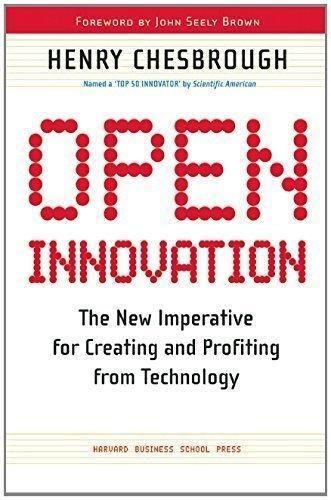What is Open Innovation and how does it work?
If our children can prototype a product idea or innovation to manufacturing companies, how would these corporate Open Innovation programs work? As I mentioned in my earlier blogs, we can work with our children to license an idea to a company who would pay us a royalty to help with the children’s college fund. But critical to this process is to understand what Open Innovation is and how it works.Defining Open Innovation First, you should know that the person who popularized the term was Dr. Henry Chesbrough, who currently teaches at the Haas Business School, UC Berkeley, in his 2003 book, “Open Innovation: The New Imperative for Creating and Profiting from Technology.” In a more recent Forbes magazine article, he provided a (rather academic) definition: Open innovation is “the use of purposive inflows and outflows of knowledge to accelerate internal innovation, and expand the markets for external use of innovation, respectively.” Personally, I prefer Wikipedia’s explanation: The central idea behind open innovation is that, in a world of widely distributed knowledge, companies cannot afford to rely entirely on their own research, but should instead buy or license processes or inventions (i.e. patents) from other companies. Pluses and minusesOf course, there are advantages as well as disadvantages for companies that engage in Open Innovation. Here is a partial list, also from the Wiki article:Advantages
Reduced cost of conducting research and development
Potential for improvement in development productivity
Incorporation of customers early in the development process
Disadvantages
Possibility of revealing information not intended for sharing
Potential for the hosting organization to lose their competitive advantage as a consequence of revealing intellectual property
Increased complexity of controlling innovation and regulating how contributors affect a project
How it worksSo how does Open Innovation work? While there are different methods, such as those sponsored by governments or competition based, the one we are most interested in is the “Collaborative product design and development” model. Here, a company still controls and maintains the production of the final product, but it is sharing the sales revenue with external co-designers (that’s you!) because you have found a way to make the product more usable and thereby more acceptable in the market. By using an outside co-designer, but maintaining production control, companies can get their new products to the market faster than just relying on their internal R&D departments. You will need to find ways to protect your own ideas, which I will discuss in the next blog. Who’s practicing Open Innovation?We want to look for inventor friendly companies or companies that are in industries that are constantly looking for new ideas to stay ahead. Here is a list of “15 Examples of Open Innovation between Big Companies & Startups.” And here is a very long list of “Inventor Friendly Companies.”Looking at these two lists, which include even massive companies like GE, it should be very clear that Open Innovation is a key trend for many industries. This is because corporations understand that that we are living in information and technological boom times and they need to be part of that or risk falling behind.For us parents with kids, with the cost of prototyping MUCH lower than just 5-10 years go, thanks to 3D printing technology, I think our children’s creativity need not be restricted to homework assignments, when they can be applied in the real world! The children provide the creative spark and we provide the discipline to make a very natural alliance that will hopefully and eventually help the children in their future education pursuits. What do you think?!


